#江古��
Explore tagged Tumblr posts
Text
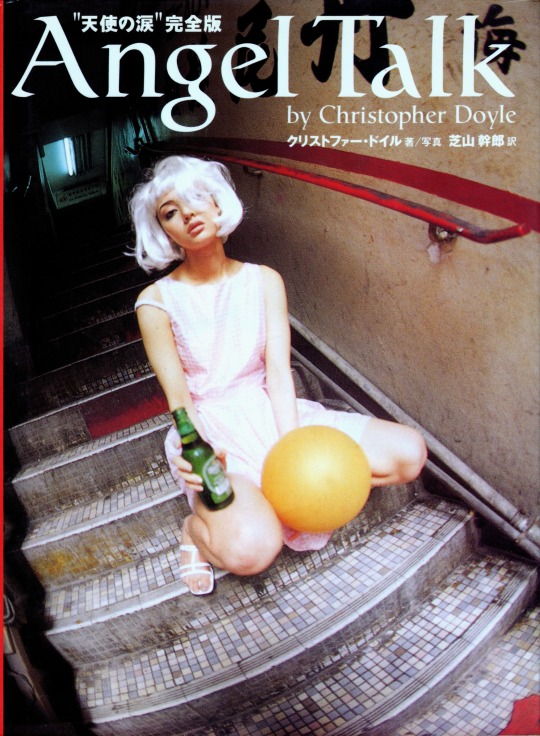
エンジェル・トーク ~天使の涙~完全版 クリストファー・ドイル=著・写真、芝山幹郎=訳 プレノン・アッシュ 1998年第3版 装丁:アートディレクション=祖父江慎、デザイン=藤井裕子(COZ-FISH)
#エンジェル・トーク ~天使の涙~完全版#Angel Talk#エンジェル・トーク#christopher doyle#クリストファー・ドイル#mikio shibayama#芝山幹郎#shin sobue#祖父江慎#藤井裕子#COZ-FISH#anamon#古本屋あなもん#あなもん#book cover
815 notes
·
View notes
Text
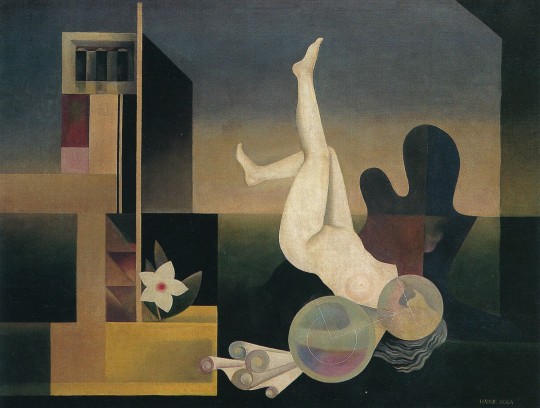
Harue Koga (1895-1933) — Harsh Heritage [oil on canvas, 1931]
450 notes
·
View notes
Text

Sean bienvenidos, japonistasarqueológicos a un nuevo especial, en esta ocasión vengo a celebrar que ya somos 2726 seguidores mil gracias por el apoyo que le dais a este proyecto que empezó en diciembre de 2021 y para esta ocasión os voy a traer una publicación de historia del arte japonés, ya que me lo habéis pedido. Además, es el arte que más me gusta, ya el del resto del mediterráneo, no me gusta para nada en absoluto dicho esto comencemos. - La pintura que podéis apreciar data del siglo XIX fue realizada en papel de hierva, el autor se llama Hiroshige Utagawa, pero su nombre real fue Tokutaro, estudio el arte occidental y fue uno de los personajes más destacados en lo que respecta al arte del paisaje. ¿Conocían a este artista? ¿Os gustaría que hablara de él? Dejármelo en los comentarios. - Espero que os haya gustado y nos vemos en próximas publicaciones de arqueología e historia japonesa. - 考古学ジャポニストの皆さん、ようこそ、新しいスペシャルへ。今回は、私たちのフォロワーがすでに 2726 人に達したことを祝うために来ました。2021 年 12 月に始まったこのプロジェクトへのサポートに感謝します。この機会に、日本美術史の出版をお願いしたので。 さらに、それは私が最も好きな芸術であり、地中海の残りの部分ではまったく好きではありません. そうは言っても、始めましょう. - ご覧になれる絵は19世紀にさかのぼる草紙に描かれたもので、作者は広重さんです。 歌川は本名を徳太郎といい、洋画を学び、山水画の第一人者でした。 このアーティストを知っていましたか? 彼について話してくれませんか? コメントで私に任せてください。 - 考古学と日本史の今後の出版物でお会いしましょう。 - Welcome, archeological japonists to a new special, this time I come to celebrate that we are already 2726 followers, thank you very much for the support you give to this project that began in December 2021 and for this occasion I am going to bring you a publication of the history of the Japanese art, since you have asked me. In addition, it is the art that I like the most, and that of the rest of the Mediterranean, I do not like it at all. Having said that, let's begin. - The painting that you can see dates back to the 19th century and was made on grass paper. The author's name is Hiroshige. Utagawa, but his real name was Tokutaro, he studied western art and was one of the most prominent people when it comes to landscape art. Did you know this artist? Would you like me to talk about him? Leave it to me in the comments. - I hope you liked it and see you in future publications of archeology and Japanese history.
#日本#美術#アートジャパン#ユネスコ#江戸#江戸時代#美術史#日本美術史#広重#考古学者#考古学#写真#japan#art#artjapan#UNESCO#edo#periodeedo#history#historyofart#historyofartjapan#hiroshige#archaeologist#Archaeology#historyjapan#pinture
41 notes
·
View notes
Text


6年约友平台,各取所需,互不打扰,会员制,499起,能接受再加哦,非诚勿扰!
#反差#女大学生#文爱#厦门约炮 福州约炮 山西约炮 黑龙江约炮 陕西约炮 贵州约炮 湖南约炮 甘肃约炮 内蒙古约炮 海外华人 布里斯班约 兰州约炮 新疆约炮 长沙约炮 海南约炮 南京约炮 上海约炮 广州约炮 深圳
44 notes
·
View notes
Photo
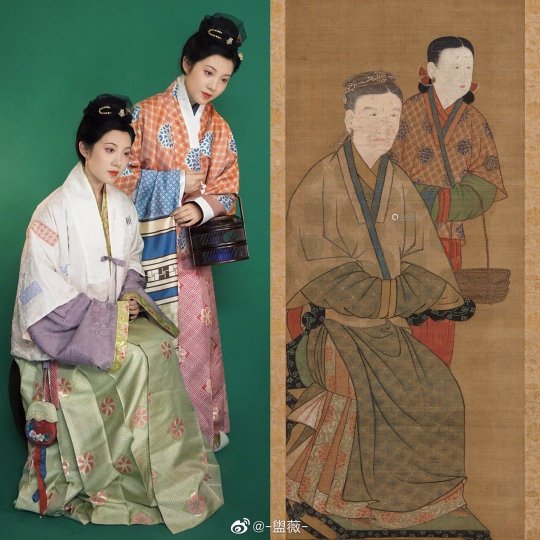


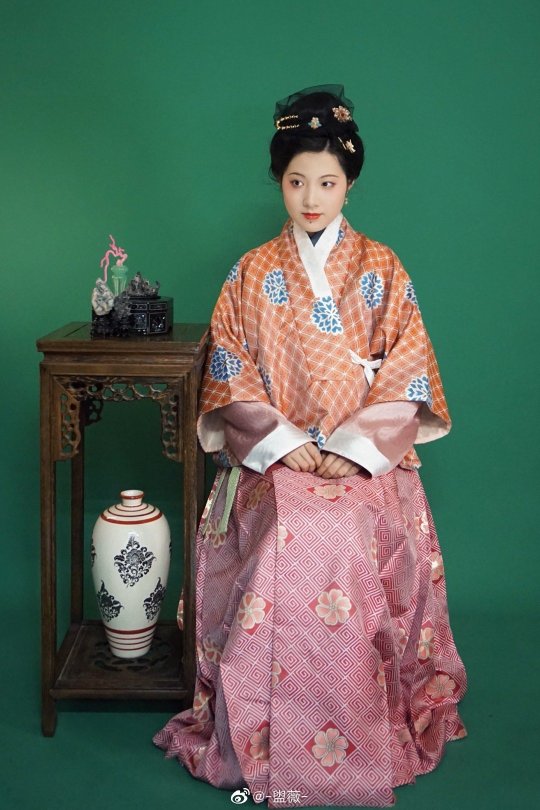
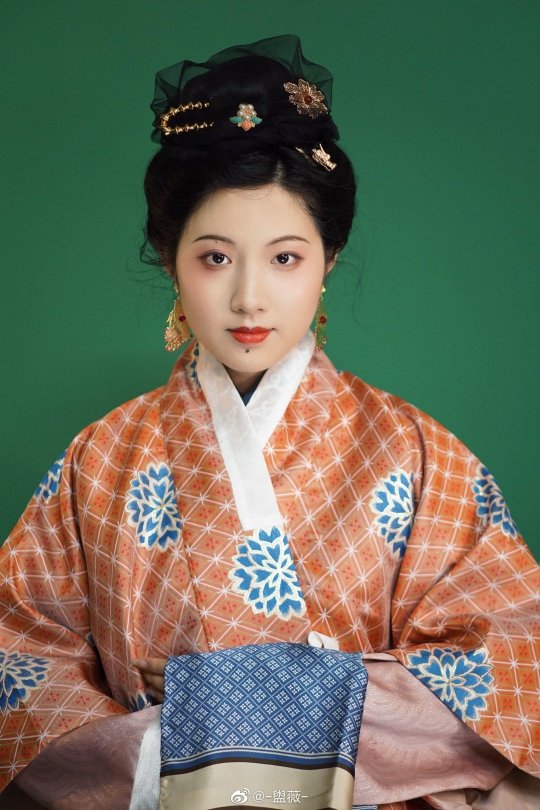
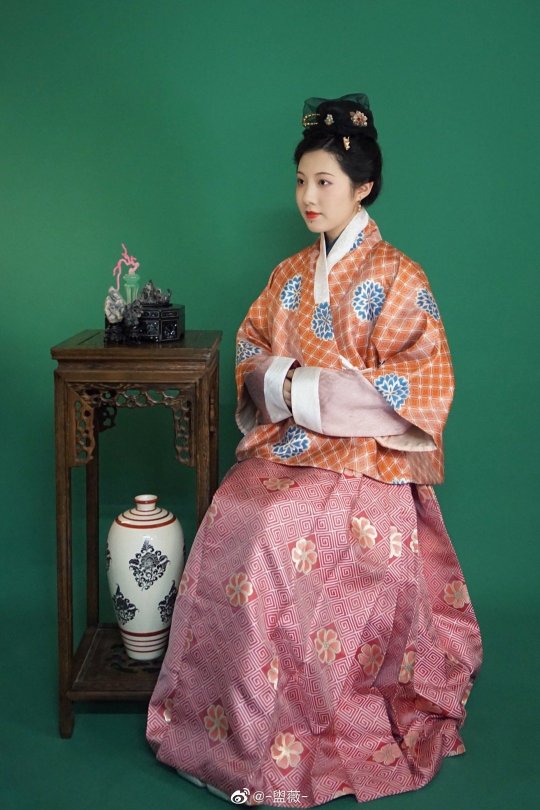



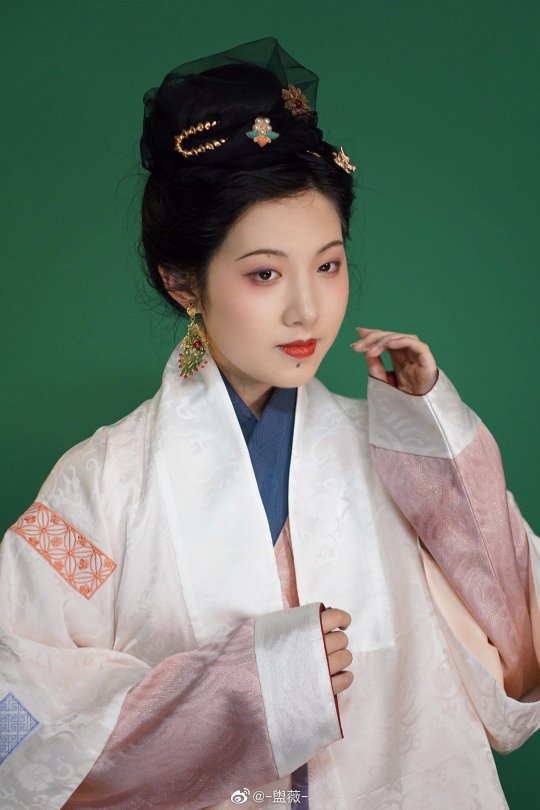

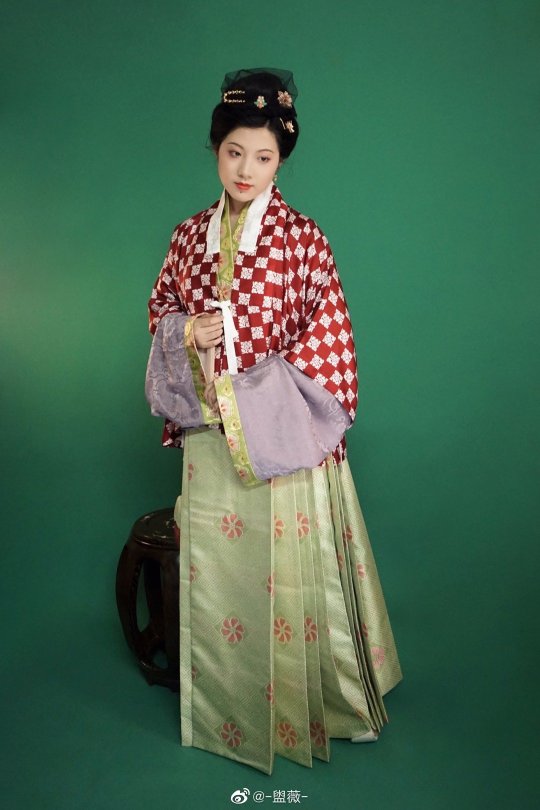
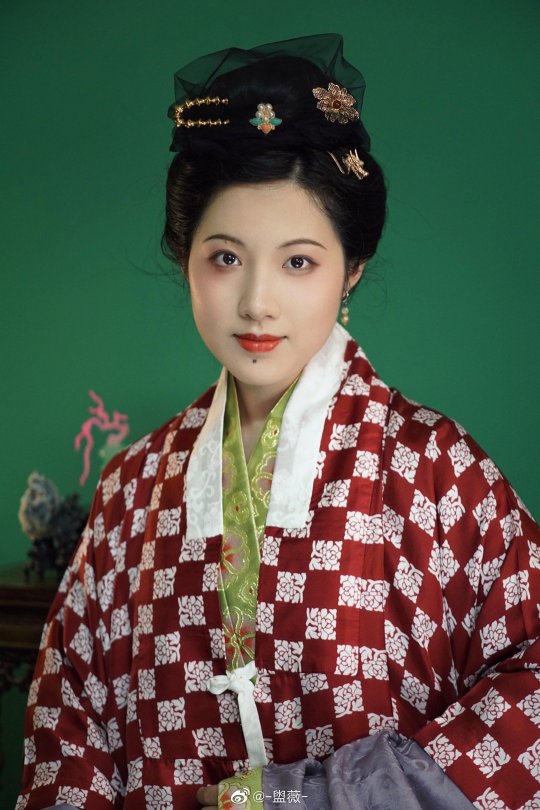
【Historical Reference Artifacts】:
Portraits and Mural of Women in the Late Yuan-Early Ming Dynasties

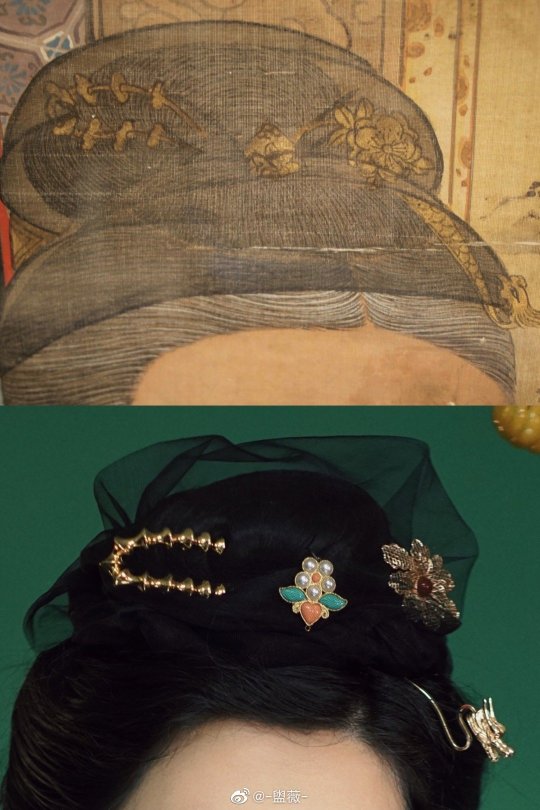
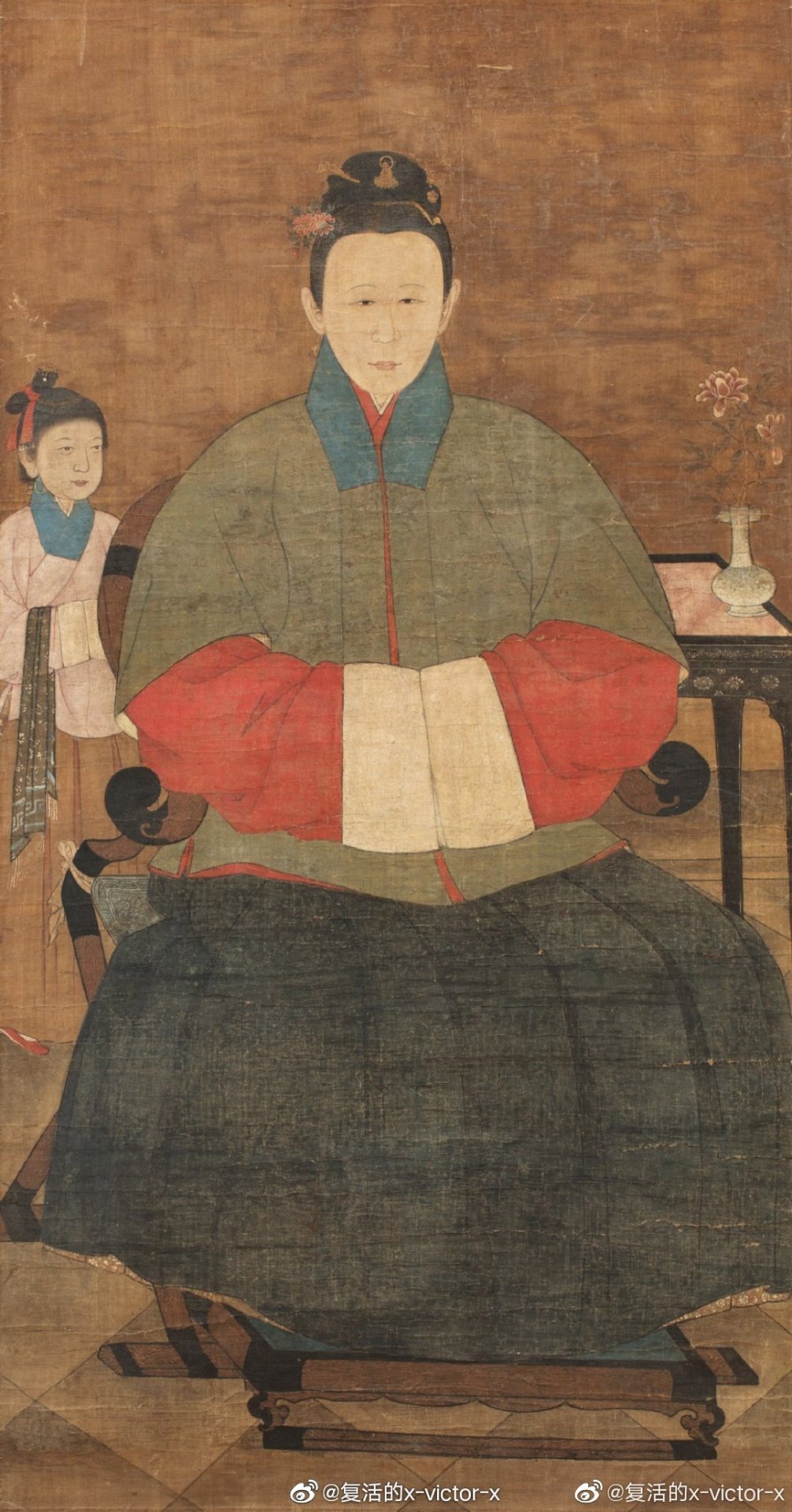
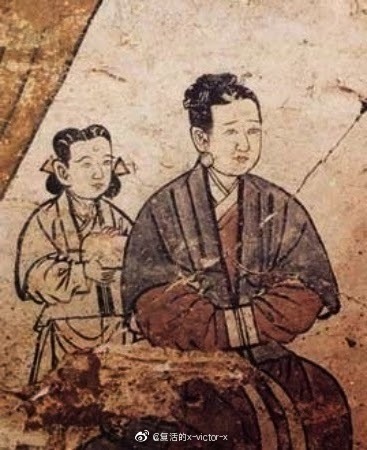
Chinese Ming Dynasty Yongle period(1360–1424) Hanfu Relic: 长袖夹衣&素纱单裙
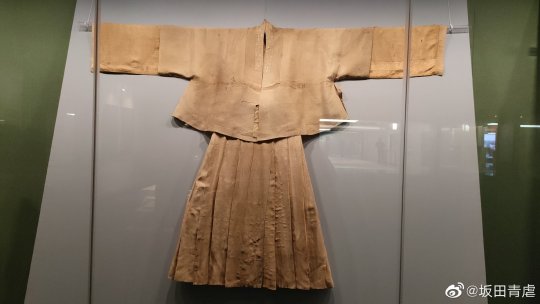
Yuan Dynasty Clothing Relics: 妆花凤戏牡丹纹绫夹衫,Unearthed from the tomb of Wang Shixian(汪世显)'s family in Zhang County,Gansu Provincial Museum Collection
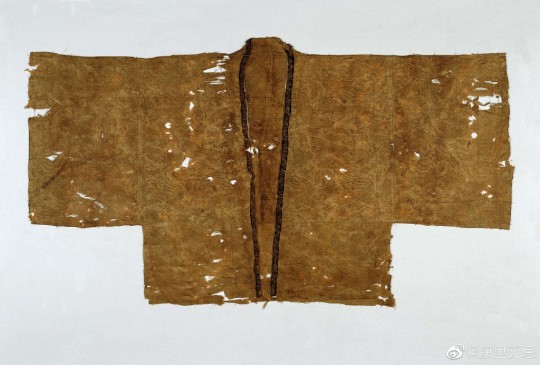
Yuan Dynasty Clothing Relics: 印金团花图案夹衫
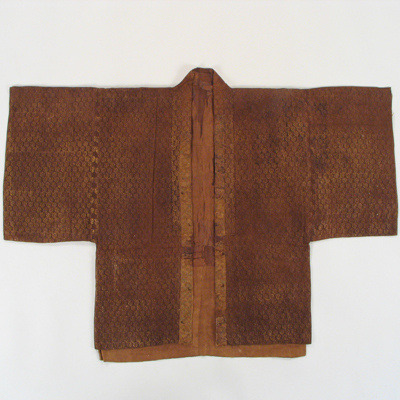
[Hanfu · 漢服]China Late Yuan to Early Ming Dynasties Traditional Clothing Hanfu Refer to Portraits and Mural of Women in the Late Yuan-Early Ming Dynasties
Typical styles of Han ethnic Women in the Late Yuan and Early Ming Dynasties
And it seen that the jacket has a certain connection with the jacket of the Southern Song Dynasty to some extent as blow:
Cotton jacket unearthed from the tomb of Huang Sheng(黄昇) in the Southern Song Dynasty in Fuzhou
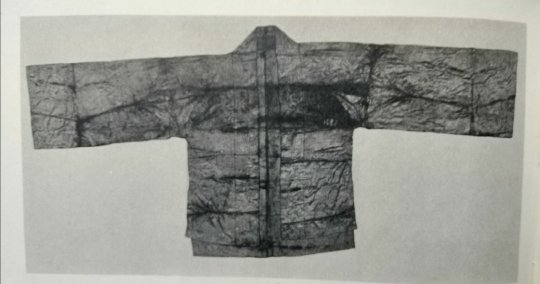
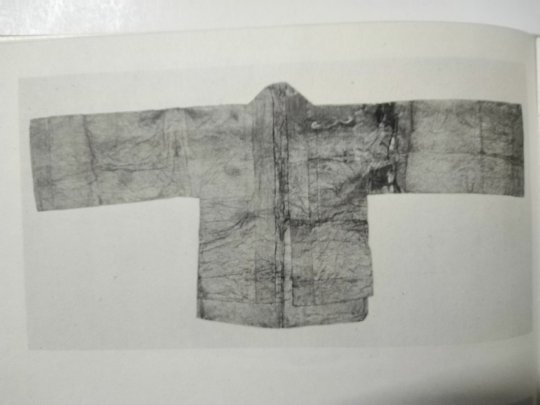
Chinese Southern Song Dynasty Painting<仙馆秾花图>,Collection of National Palace Museum, Taipei

_______
📸Recreation Work: @-盥薇-
👗Hanfu: @YUNJIN云今
💎Earring:@江琛复古生活馆
🔗Weibo:https://weibo.com/3942003133/N6t86nHOM
_______
#chinese hanfu#Late Yuan and early Ming Dynasty#southern song dynasty#Yuan Dynasty#hanfu#chinese fashion#China History#historical fashion#historical hairstyles#hanfu accessories#-盥薇-#YUNJIN云今#@江琛复古生活馆#china
217 notes
·
View notes
Text
刺青 和彫り古典 江戸の町火消で���大の神田のよ組の組頭関口紺三(=関口亀次郎=関口宏の祖父)


よ組 組頭関口紺三(=江戸彫勇会初代会長 関口亀次郎) 初代彫宇之作 三紋龍
(上)読売新聞 大正4年(1914) 8月6日朝刊 「倶利伽羅紋々競 神田ッ兒自慢の文身」 によると、背中の龍は関口氏が12歳の時に初代彫宇之が彫った。
(下)私蔵されていた写真。右腕に龍の頭、右太腿に龍の尾が確認できる。片肌脱ぎにしている半天の襟に「第一區」、後ろの半天の襟に「澁澤」と染め抜かれている。
*紺三はよ組組頭が引継ぐ名前みたい。*第一区が神田
7 notes
·
View notes
Text

"Portrait of a Woman" (婦人像) by Koga Harue (古賀春江), 1924
"Retrato de una mujer" (婦人像) de Koga Harue (古賀春江), 1924
17 notes
·
View notes
Text



美彩新作「ヘビのヘビー級チャンピオン」
美彩さんのダジャレセンスが光るお題に、わたくしも思わずニヤリ。
今、何かと戦っている気分の方、きっとこのぽやんとしたお顔の白蛇様を眺めていれば、肩の力抜けて、いいタイミングでパンチ繰り出せ��ようになれるはず(たぶんw
副題は「力抜け抜けもっと抜け」
通販→https://goo.gl/zzmdh9
youtube
7 notes
·
View notes
Text
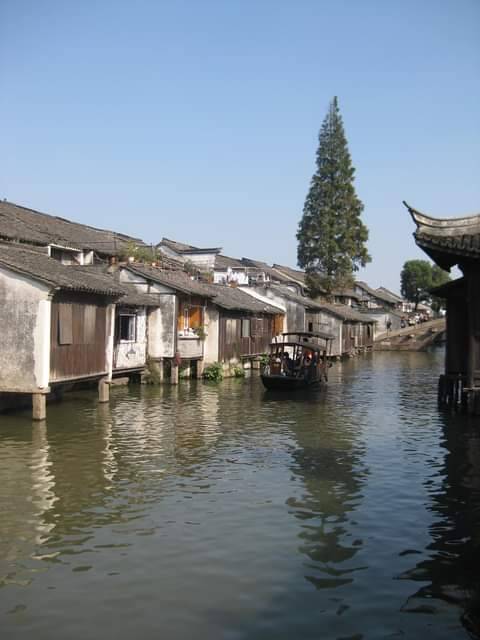



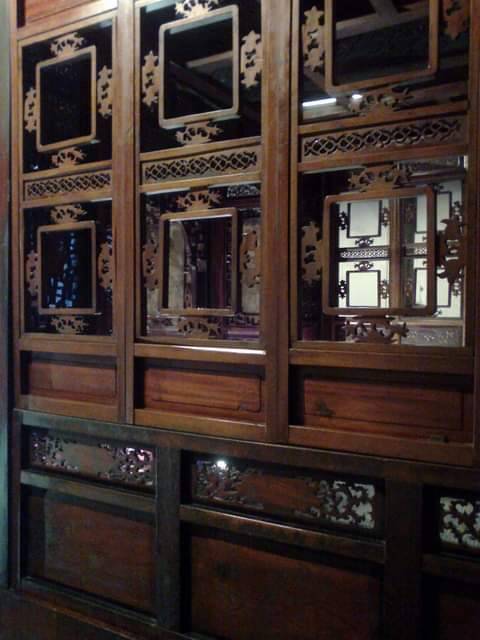

💗 最是難忘~烏鎮 Wuzhen (之二) It's a historic scenic town, part of Tongxiang, located in the north of Zhejiang Province, China.是典型的江南水鄉古鎮,烏鎮原以市河(車溪)為界,分為烏青二鎮,河西為烏鎮,屬湖州府烏程縣;河東為青鎮,屬嘉興府桐鄉縣。中華人民共和國時期,市河以西的烏鎮劃歸桐鄉縣,統稱烏鎮 (Wu Town)。
烏鎮街道上民居以清代建築為主,保存完好。全鎮以河成街,橋街相連。各式民居、店鋪依河築屋,即有深宅大院、百年老屋,也有河埠廊坊,過街騎樓,是江南典型的「小橋、流水、人家」。烏鎮為千年文化名鎮,在歷史上小鎮曾出過64名進士、161名舉人。茅盾、沈澤民、嚴獨鶴等都為烏鎮人。
2014年11月19日到21日,首屆「世界互聯網大會」在烏鎮舉辦,該地也成為世界網際網路大會的永久會址。Wuzhen has been the permanent host place of the annual World Internet Conference, an international Internet conference held in China, since 2014.
❖ 無法不愛上它的木色及綠與灰的老調重唱 Really can't help fall in love with its wood color while green and gray quartet the old tune to.
❖ 此外,我有一個深刻的印象就是。。。拍照要分秒必爭。遊客的人群移動永遠比照相機的快門還快,起初我很是光火,可,還真是屁都沒人敢放一聲,因為連幹架和理論以及理論的位置都擠不出來, LOL 除非你甘願走水路,重點是:船也很忙,不只是牛仔很忙! 哈哈哈!!!
In addition, I have a deep impression. . . Every second counts when you're taking photos. The crowd of tourists always moves faster than the shutter of the camera. I was very mad at first, but no one dared to say shit, because I couldn’t even fight and argue, or even squeeze out the gap where you want to argue; people pused you go go go, Jesus! LOL Unless You are willing to take the water route, the point is: boats are also busy, not just "cowboys are busy". (It's a famous's song named by Taiwan singer - Jay Chou) Hahaha!!!
❖ 對每一趟旅行的回顧,無論旅程的長短、好壞都是感激,對於自己的視野全是新的啟迪和認知。對我來說,這是一段美好而豐富的記憶,尤其是我從那些和我一起旅行的最親密的人那裡學到了許多事和人性。Looking back on every trips, no matter how long or short, good or bad, is full of gratitude. It is a new enlightenment and understanding of my own vision. and A pretty nice & rich memory for me, Especially I learned things and humanity from so close people that traveled. 🙏 Lan~* xoxo
Photos by Chu Lan.

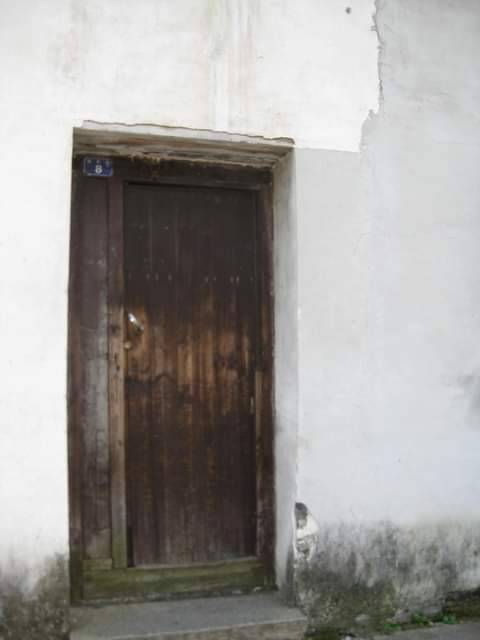


#chu lan#artist from taiwan#traveled#memories#my memory#中國/浙江省#桐鄉市/江南著名古鎮之一:烏鎮#wuzhen#tongxiang#zhejiang#china
7 notes
·
View notes
Text

水着ウイヒナ とハナコハ
24 notes
·
View notes
Text

雲を笑いとばして 今江祥智 理論社 装幀=平野甲賀、画=宇野亜喜良
#雲を笑いとばして#yoshitomo imae#今江祥智#aquirax#uno akira#akira uno#宇野亜喜良#koga hirano#平野甲賀#anamon#古本屋あなもん#あなもん#book cover
111 notes
·
View notes
Text

Harue Koga (1895-1933)—Scene in the Deep Sea [oil on canvas, 1933]
253 notes
·
View notes
Text

日本の考古学と科学思想の歴史。 第3章 : 日本の考古学者の皆さん、哲学的観点から見た新しい日本考古学へようこそ。 - 1868年当時、日本にはヨーロッパやアメリカで見られるような科学的根拠はありませんでした。日本がその精神やその一部を開放したのは、1868年から1869年の戊辰戦争後になります。米国のような国は日本の科学をモデルにするだろうから、非常に保守的だった。 日本で骨董品への関心が芽生えたのはいつ頃ですか? 江戸時代にはすでに骨董品への関心があったことが知られており、はるか昔にヨーロッパでも同様のことが起こりました。 日本の発掘の始まりは19世紀のほぼ終わりに始まり、数年前に日本でいくつかのローマ硬貨が発見されました。どうやら日本の封建領主は古遺物を収集するのが好きでした。おそらくそれらは中国のどこかの港から海岸に到着しました。日本語。 - 過去を知りたいという欲求は、どの大陸に属していても、すべての人類に共通のものであり、問題の時代についても同じことが言えます。 ヨーロッパやアメリカの様々な勢力が日本に到来したとき、彼らはその住民に影響を与えました。そのため、日本人によって日本考古学の父と考えられているエドワード・モースを、他の登場人物の中でも特に取り上げています。 19 世紀には、アメリカ哲学の最も偉大な学派の 1 つであるテイラー主義があり、これは台湾で考古学的発掘を行い、中国および韓国との関係を確立する日本の考古学の最も偉大な人物の 1 人である鳥居龍蔵に影響を与えることになります。 - 気に入っていただければ幸いです。今後の投稿でお会いしましょう。良い一週間をお過ごしください。 - HISTORY OF JAPANESE ARCHEOLOGY AND SCIENTIFIC THOUGHT. Chapter 3 : Welcome, Japanesearchaeologicalists, to a new installment of Japanese archaeology, seen from a philosophical point of view. Having said that, get comfortable and let's begin. - In 1868 Japan did not have a scientific base per se as we can see in Europe or the United States, it will be after the Boshin War of 1868-69 when Japan opened its mentality or part of it, since a good part of the population was very conservative because Countries like the United States would model Japanese sciences. When did interest in antiques arise in Japan? It is known that in the Edo period there was already interest in antiquities, something similar happened in Europe a long time ago. The beginning of the Japanese excavations began almost at the end of the 19th century, a few years ago some Roman coins were discovered in Japan, apparently a feudal lord in Japan liked to collect antiquities, they probably arrived from some port in China to the coasts Japanese. - The desire to know the past is something that all human beings share, no matter what continent you belong to and the same can be said about the era in question. When the different powers from Europe and the United States arrived in Japan, they influenced its inhabitants, thus we have, among other characters, Edward Morse, considered by the Japanese, the father of Japanese archaeology. During the 19th century we have one of the greatest schools of American philosophy, Taylorism, which will influence one of the greatest figures of Japanese archeology Torii Ryūzō who will carry out archaeological excavations in Taiwan, establishing relations with China and Korea. - I hope you liked it and see you in future posts, have a good week.
#日本#歴史#考古学#哲学#人類学#人類進化学#アメリカ合衆国#科学#東アジア#エドワードシルベスターモース#戊辰戦争#ヨーロッパ#江戸時代#テーラーリズム#ユネスコ#Japan#History#Archaeology#Philosophy#Anthropology#Human Evolution#United States of America#Science#East Asia#Edward Sylvester Morse#Boshin War#Europe#Edo Period#Taylorism#UNESCO
21 notes
·
View notes
Text
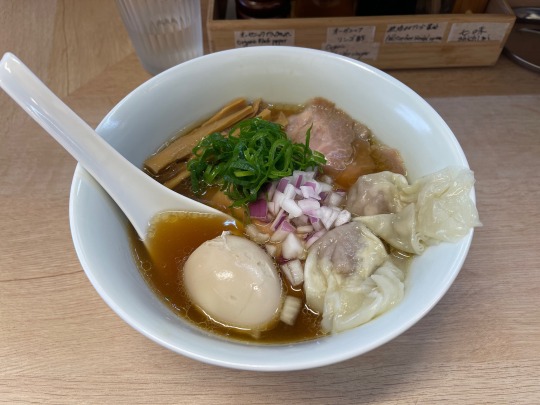
中華そば NATURA 「特製地鶏中華そば」
✔️Store name / Menu
✔️Nearest : 江古田駅
#ラーメン#ramen#醤油らーめん#noodles#醤油ラーメン#しょうゆラーメン#しょうゆらーめん#shoyu ramen#shoyuramen#江古田#ekoda#ラーメンジャケ買い#food#japanese#夜食テロ#tokyo
27 notes
·
View notes
Photo
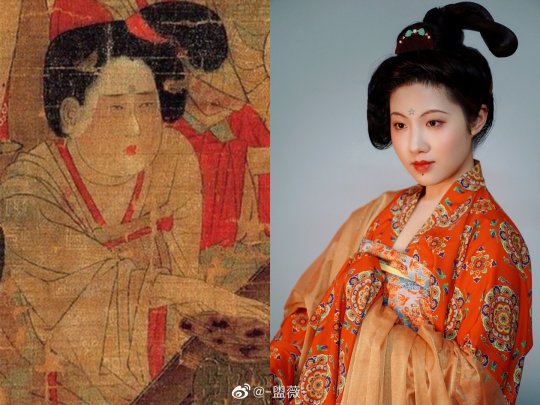
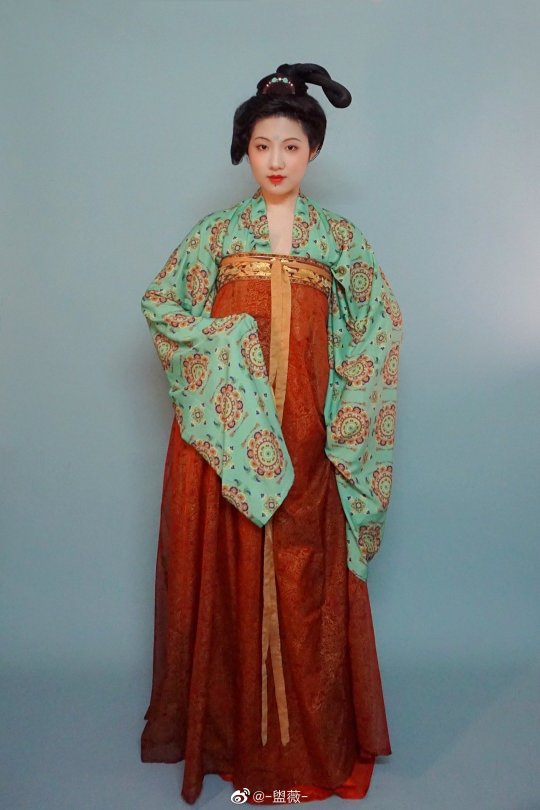

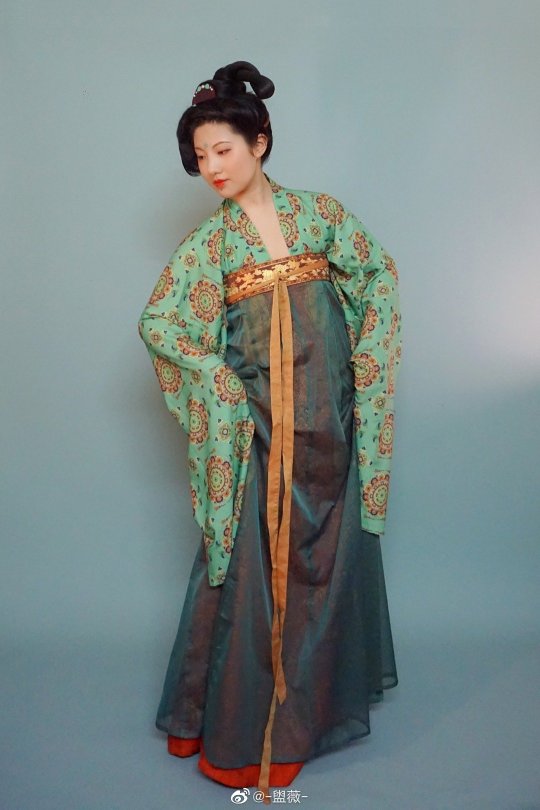
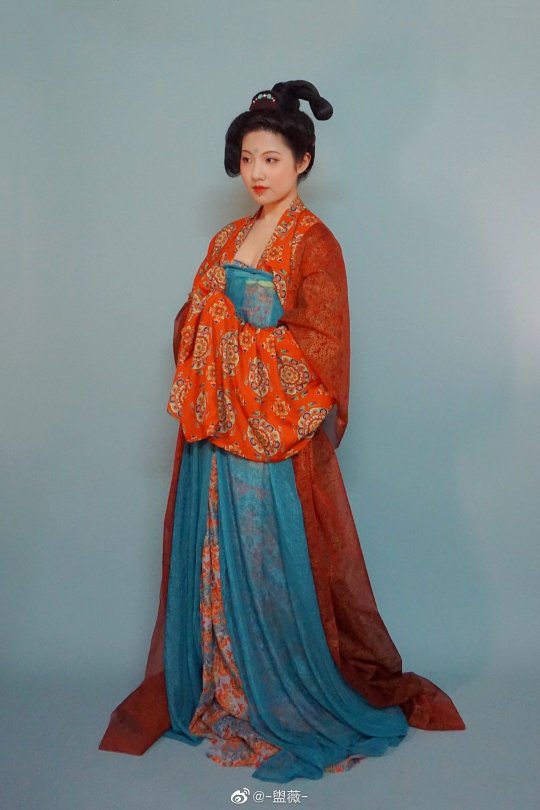

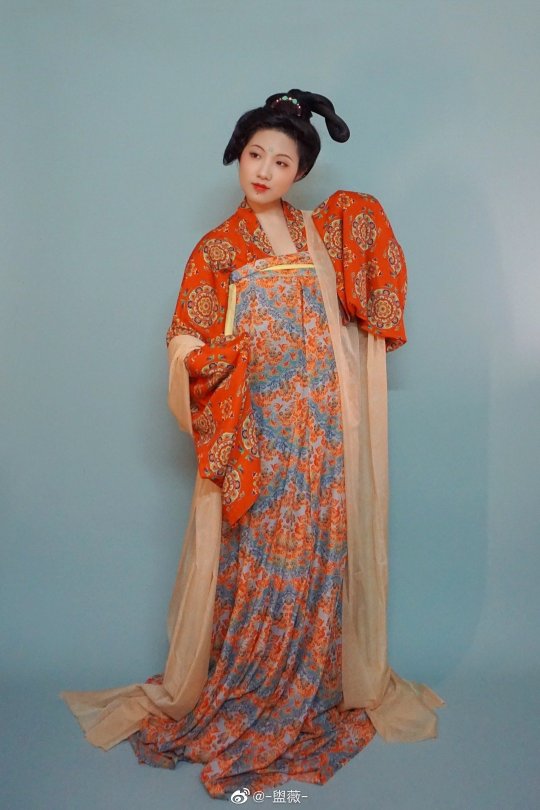
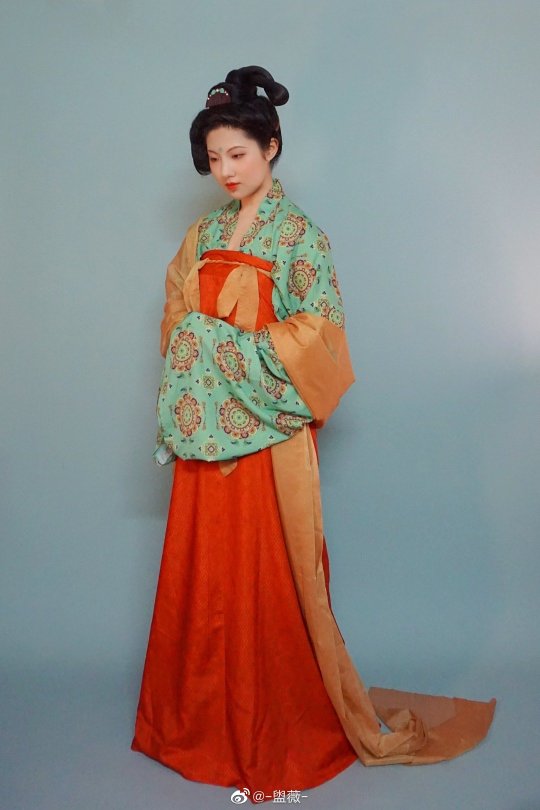

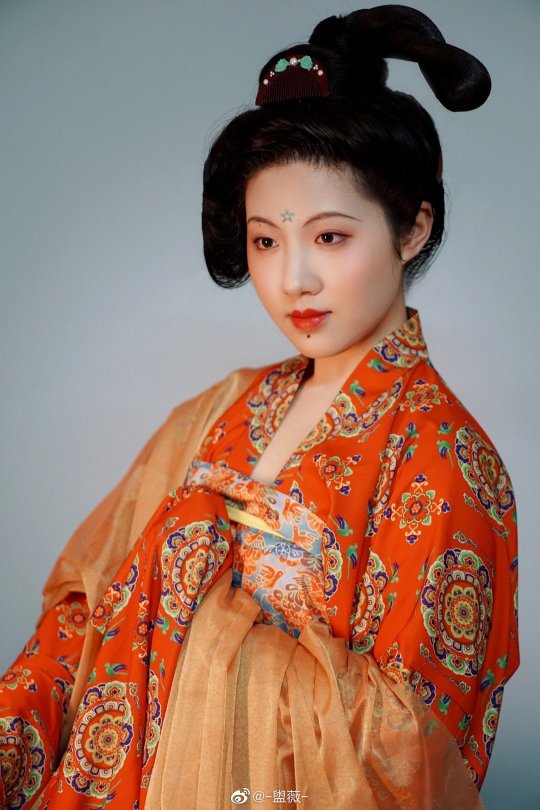


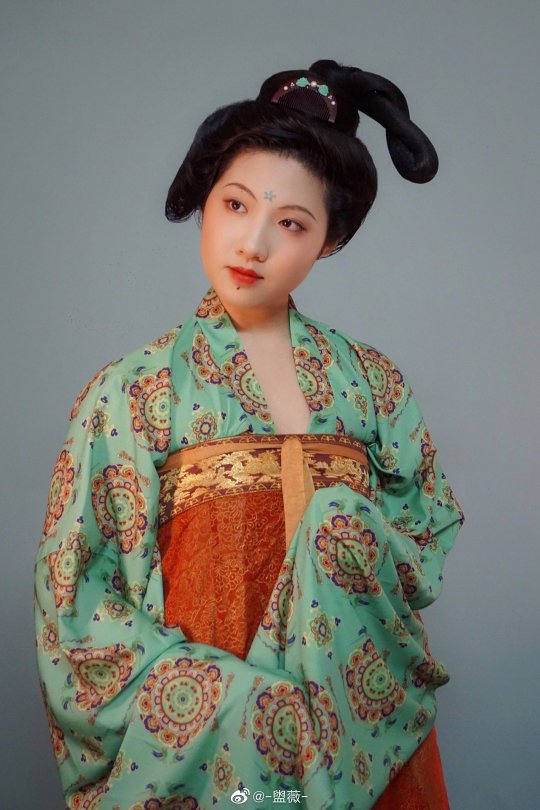
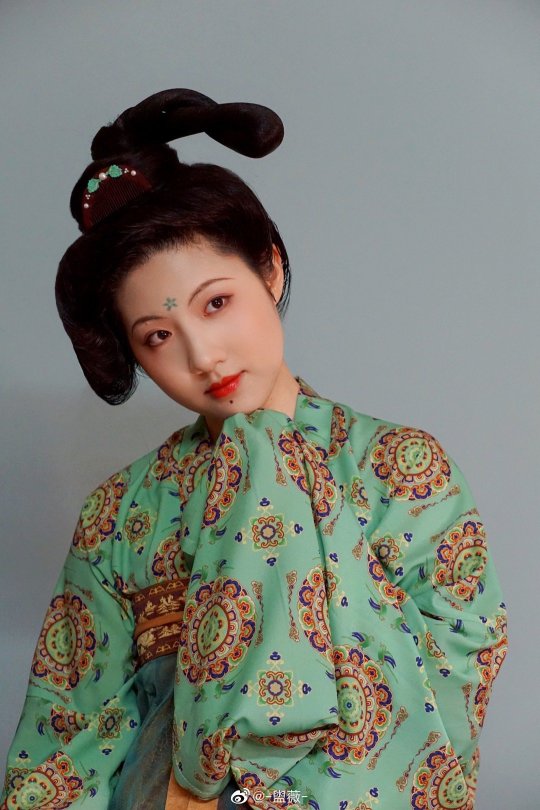
[Hanfu · 漢服]Chinese Tang Dynasty(618-906 A.D)Traditional Clothing Photoshoot
【About Hairstyle “堕马髻 [duò mǎ jì]”】
During the Tang Dynasty, Li Shan(李善) quoted "record of the Customs/《风俗通》" recorded : “‘堕马髻者,侧在一边’,......始自梁冀所为,京师翁然皆效之”。
( “堕马髻 [duò mǎ jì]” is a hairstyle with a side hair bun. It was created by Liang Ji's family and later imitated by the people in the capital.)
The characteristic of this hairstyle is that the hair hangs sideways to the shoulders, and a lock of hair is separated from the bun to scatter freely. If combine with “啼妆(Makeup that make people look like they are crying)” and “愁眉(sad looking brows)“, it will look like a woman who has just fallen from a horse, which can increase a woman's sense of charm.
The“堕马髻 [duò mǎ jì]”appeared again during the Tianbao era(742–756) of the Tang Dynasty, and became popular during the Zhenyuan period(785–805) of the Tang Dynasty. In the Tang Dynasty, some people described the shape of roses hanging down and petals gently touch the ground, like the hairstyle “堕马髻 [duò mǎ jì]”. “堕马髻 [duò mǎ jì]”has slightly changed from generation to generation, but its basic characteristics, the sideways and inverted shapes, have not changed. “堕马髻 [duò mǎ jì]” is mainly favored by married middle-aged women.
-----
“堕马髻 [duò mǎ jì]” hairstyle originated in the Han Dynasty, during the Han Dynasty, "《后汉书∙卷六十四∙列传第二十四∙梁冀》" recorded:
“寿色美而善为妖态,作愁眉,啼妆,堕马髻,折腰步,齲齿笑,以为媚惑。冀亦改易舆服之制,作平上軿车,埤帻,狭冠,折上巾,拥身扇,狐尾单衣。寿性钳忌,能制御冀,冀甚宠惮之。”
Translation:
Liang Ji(梁冀)'s wife Sun Shou(孙寿) is very beautiful and good at being "bewitching”. She make “愁眉(sad looking brows)“,“啼妆(Makeup that make people look like they are crying)”,as shown below:
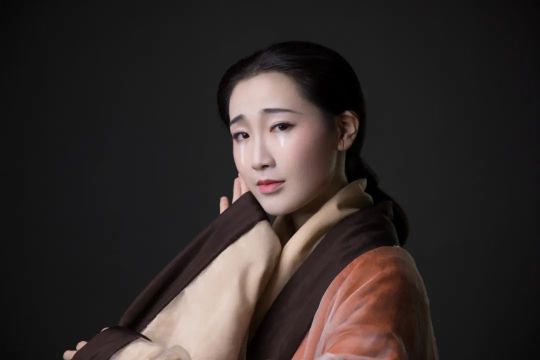
“堕马髻(comb your hair bun on one side)” ,”折腰步(refers to swinging the waist when walking)”, as shown below:
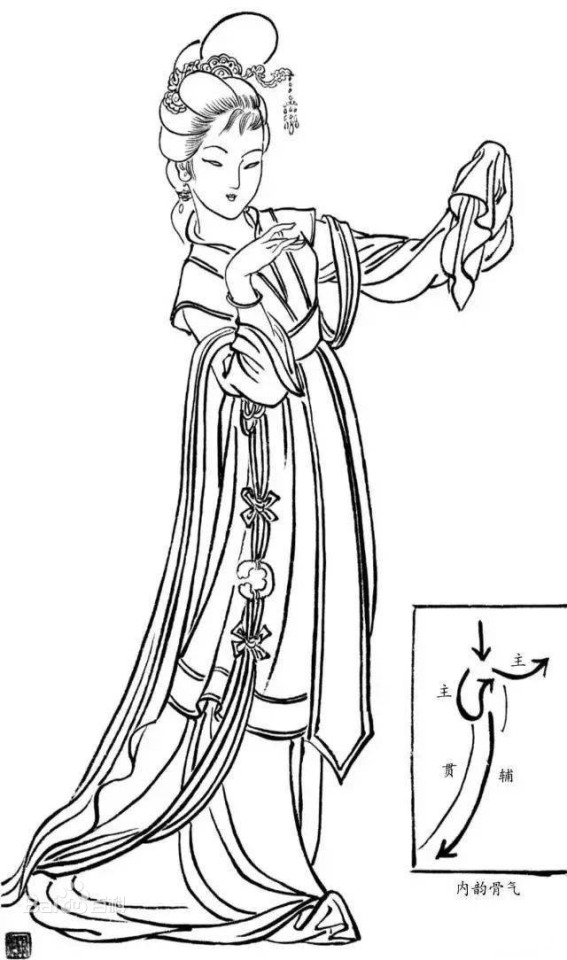
“龋齿笑(Refers to a woman's intentionally contrived smile that looks like a toothache, although is very happy inside, woman don’t laugh out loud)”, she thinking these makeup & action that will make her very cute and to attract men.
Sun Shou is jealousy because she can subdue his husband Liang Ji. Liang Ji dotes on her very much, but is also afraid of her.Sun Shou's actions and the makeup she created were deeply loved by women in the imperial city of the Han Dynasty at that time, and they imitated her. And this trend gradually spread to other cities.
which has record in 《搜神记∙卷六∙梁冀妻》:
“汉桓帝元嘉中,京都妇女作“愁眉”“啼妆”“堕马髻”“折腰步”“龋齿笑。”“愁眉”者,细而曲折。“啼七”者,薄拭目下若啼处。“堕马髻”者,作一边。“折腰步”者,足不在下体。“龋齿笑”者,若齿痛,乐不欣欣。始自大将军梁冀妻孙寿所为,京都翕然,诸夏效之。天戒若曰:“兵马将往收捕:妇女忧愁,踧眉啼哭;吏卒掣顿,折其腰脊,令髻邪倾;虽强语笑,无复气味也。”
But these trend is actually portending a tragic end.
天戒若曰:“兵马将往收捕:妇女忧愁,踧眉啼哭;吏卒掣顿,折其腰脊,令髻邪倾;虽强语笑,无复气味也。”
Translation:
Heaven warned: "The army will come to arrest, the women are sad, frowning and crying; the officials and jailers push and kick, break their waists and spines, and make their hair buns tilt; even if they are forced to talk and laugh, they will no longer have that mood."
In the second year of Yanxi(159 AD), the whole clan and family of Liang Ji's was exterminated.
In Chinese history, it is not difficult to found that when a kind of makeup or fashion that tends to show"sad”,“crying" etc,and becomes popular among women. In many cases,It heralds the imminent demise of a dynasty.
Just like the "Blood Halo Makeup/血晕妆" in the late Tang era and popular in the Han, Tang and Southern Song Dynasty brows makeup “愁眉(sad looking brows)“.When these makeups appeared, the empire also getting weakened.
Therefore, Chinese literati and scholars of in history criticized these fashion/trend, and believed that it was a sign of the collapse of the country.
————————
📸Recreation Work & 🧚🏻♀️Model: @-盥薇-
👗Hanfu:@青泠谷汉服工作室
🛍️Hanfu:https://item.taobao.com/item.htm?spm=a1z10.3-c.w4002-21304955845.18.1b7ccf3ekxddWc&id=703584063035 & https://item.taobao.com/item.htm?spm=a1z10.3-c.w4002-21304955845.20.1b7ccf3ekxddWc&id=703118697215
Comb: @江琛复古生活馆
🔗Weibo:https://weibo.com/3942003133/MvrSj620J
————————
#Chinese Hanfu#Tang Dynasty(618-906 A.D)#Han Dynasty#chinese traditional clothing#chinese historical hairstyle#chinese historical fashion#hanfu history#Chinese history#chinese#chinese culture#堕马髻 [duò mǎ jì]#啼妆(Makeup that make people look like they are crying)#愁眉(sad looking brows)#折腰步(refers to swinging the waist when walking)#龋齿笑(Refers to a woman's intentionally contrived smile that looks like a toothache although is very happy inside woman don’t laugh out loud)#Liang Ji(梁冀)#Sun Shou(孙寿)#-盥薇-#青泠谷汉服工作室#江琛复古生活馆#齊胸衫裙 qixiong shanqun#pibo 披帛
167 notes
·
View notes
Text
刺青 和彫り古典


2) 刺青 和彫り古典
刺青 和彫り 迦陵頻伽 雷神
ブリ庄さん
背:迦陵頻伽(筋:彫五郎 ぼかし:初代彫文)
腹:雷神(初代彫文)
「原色日本刺青大鑑」 芳賀書店 (1973年)より

刺青 和彫り 不動明王(右) 雷神(左)
右:彫錦さん 不動明王 初代彫よし
左:ブリ庄さん 背 羽衣(筋:彫五郎 ぼかし:初代彫文)腹 雷神(初代彫文)
TOKYO TATTOO (1970) ©Martha Cooperより
12 notes
·
View notes